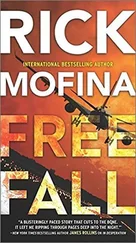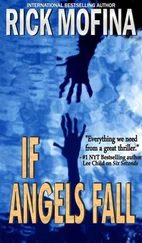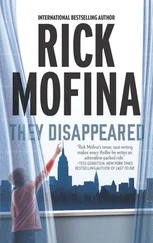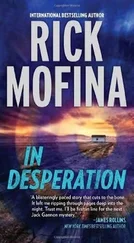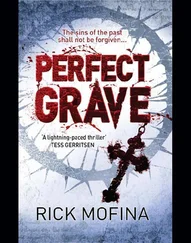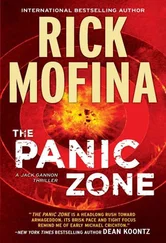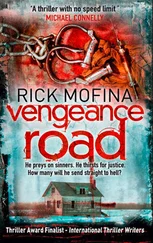What dreams did they hold? Did she have a good life? Pathologist Dr. Garry Weaver wondered before he and Monica Ozmek, who was assisting, resumed their work.
Weaver and Ozmek had conducted many autopsies over the years.
They’d grown accustomed to the coolness of the autopsy room with its smells of ammonia and formaldehyde. They knew the egg-like odor of organs, their meaty shades of red and pink. They were familiar with the pop sound when the calvarium was removed, opening the skull to reveal the brain and dura. Weaver made the usual primary Y incision across the chest as they worked their way through the external and internal examination of the body.
They’d photographed it, weighed it, measured it and x-rayed it.
Their job was to determine the manner, cause, time and classification of death, as well as positively confirm the victim’s identification. Weaver was confident about manner and cause, but identification would be a challenge.
“The dermis of the victim’s fingertips has been disfigured, likely due to being subjected to a caustic substance,” he said.
“Yes, I noted that when we were bagging the hands after we’d removed the body from the ground.”
“This tattoo may help.”
Weaver’s rubber-gloved right hand pointed a finger at the left upper neck and the tattoo of a small heart with wings.
“It should.”
“Did you submit the dental chart to the databases?”
“Yes.”
“And we also have a shot if Anderson’s team down in Saint Paul gets a hit through DNA-Monica? Are you all right?”
He saw that, behind her plastic shield, her face had saddened.
“Yes, let’s continue.”
Weaver hesitated before resuming.
Bearing in mind that his assistant seemed to be struggling with her composure, he maintained his clinical, professional distance as he found the facts to support his findings. The victim had been buried and as a result she had suffocated. There was thorax compression, but death by asphyxiation was a result of occlusion of the respiratory tract.
For a moment, before they’d concluded, Weaver considered the sensations of the victim’s last moments of being buried alive. She would have felt the crushing pressure of the soil. The pain of it pressing on her, on her organs, would have numbed her, but she would’ve still been able to think as she slowly became entombed. The soil would’ve grown warm around her face. Reflexively, she would’ve clenched her mouth shut, but eventually she’d have been forced to inhale soil, which, in combination with the earth encasing her, led to death.
He was at his computer writing his report after they had finished when Ozmek came into his office and sat in the chair near him.
She contemplated the frosty can of diet soda from the vending machine that she held in her hands.
Weaver stopped.
“Want to talk about it?”
She stared deep into the framed painting of the sun setting on the Caribbean Sea that Weaver had on the wall next to his degrees.
“I don’t know, Garry.”
“What don’t you know?”
“We go way back, don’t we?”
“Sure, way back to before the ME’s office was at the Mercy and the morgue was in the basement, remember that?”
“Sure.” She took a hit of her soda and swallowed. “But the thing is, we’ve seen it all-the fires, the car wrecks, stabbings, shootings, drownings, hypothermia, suicides, just about everything you can think of.”
“Right.”
“But this. I mean she was buried alive. We both know what she would’ve gone through.”
“Yes, but it would’ve been short, a minute or two, if that’s any comfort.”
“It isn’t. What I cannot comprehend is why someone would take her life with such vile, calculating malevolence.”
Weaver nodded.
“This one just pierced me. It just-” She shook her head.
Weaver patted her hand.
“Let’s move on getting our findings to BCA, submit everything to every possible database, so we can help catch her killer.”
Chicago
As the jetliner approached O’Hare International Airport, Kate took in Chicago’s sprawl and skyline, knowing that time was ticking down on the inevitable.
Sooner or later Vanessa would be identified as one of Nelson’s victims, but Kate couldn’t sit back and do nothing.
She had to find him.
During her flight from JFK, she’d reviewed key aspects of the story. It took some convincing, but Chuck, who was a hard-core old-school reporter, had approved the trip. He’d agreed that if they struck out on her hunch about Nelson’s links to Chicago, Denver and the Alberta abduction, they struck out.
“That’s the way it goes. With this story we have to roll the dice,” he’d said, behind his steepled fingers. “We’ll put in the legwork and see where this leads. We’re not going to risk having a competitor beat us. You’re sure you’re okay to go?”
“I’m sure, Chuck. I need to do this.”
“All right. I’ll alert our Chicago bureau. Call on them if you need anything, like a shooter if you find something.”
“I will.”
“I’ll give you a couple of days. Good luck.”
Before she left headquarters she’d put in more research with the news library, then she went to Davidson. Viper had not given her a way to contact him. She needed Hugh to reach out to him through his sources.
“I will, Kate. But you know that he might not respond.”
Now, as the jet’s flaps groaned, Kate turned her thoughts from the window to her files, rereading the document dealing with the Chicago burial site for Krasimira Zurrn.
Who was she?
Kate concentrated on the newest information she’d uncovered: A death notice that appeared in the Chicago Tribune in 1998.
Krasimira Anna Zurrn, 53 years old, died Oct. 12, 1998. Beloved mother of Sorin Zurrn. Visitation on Tuesday 10:00 a.m. until Mass 11:00 a.m. at Glorious Martyrs and Saints Church, Belmont. Interment Service 2:00 p.m. at New Jenny Park Cemetery, 9200 Kimball.
After landing Kate made calls while waiting in line for her rental car. She could’ve had someone from the bureau pick her up, but she needed to do this on her own.
The funeral home that had handled Zurrn’s service was no longer in business. Kate’s calls to the Glorious Martyrs and Saints Church for help reaching the dead woman’s son, Sorin Zurrn, had not been returned. But Kate’s earlier search of archived public records had yielded a nugget of information: In 1998, Krasimira Zurrn lived at 6168 Craddick Street. Kate entered the address in the GPS of her rented Nissan Altima before leaving O’Hare.
Merging with traffic on the Kennedy Expressway, Kate experienced the familiar rush of self-doubt that usually plagued her whenever she embarked on a difficult assignment.
This time her stomach tensed.
Oh, God, what am I doing here? This is likely a waste of time, my way of avoiding the truth-that Vanessa is dead in Rampart or died twenty years ago in the river, and that somehow someone found her necklace and it made its way to New York and… Stop it! Just stop it and work!
She took the Kimball Avenue exit.
Craddick Street was on the Northwest Side of Chicago. It fell between the areas of Avondale and Belmont Gardens in a neighborhood known as New Jenny Park, which had a large Polish and Eastern European population. According to the park’s history, the name arose from the phonetic sound of Nee-WOE-Jenny, thought to be the Polish word for peace .
Kate agreed with her research-this was a solid blue-collar community. Meat shops, bakeries, grocery stores and cafés sprinkled the business district. The streets were lined with modest bungalows on small lots, a playground here and there.
Читать дальше
Конец ознакомительного отрывка
Купить книгу

